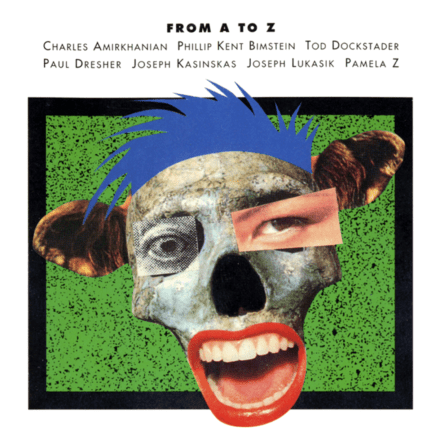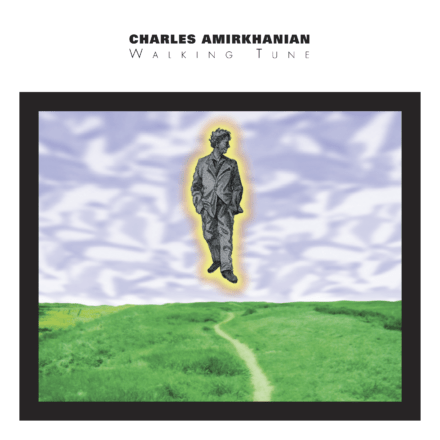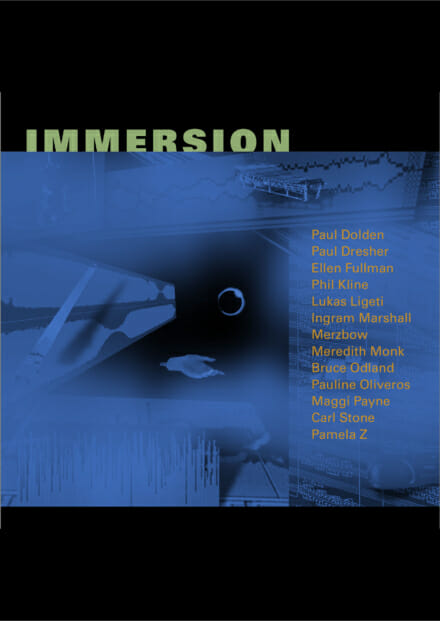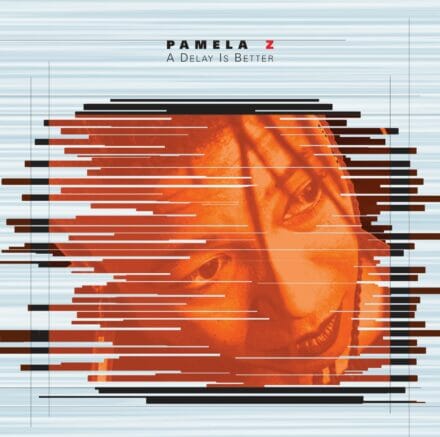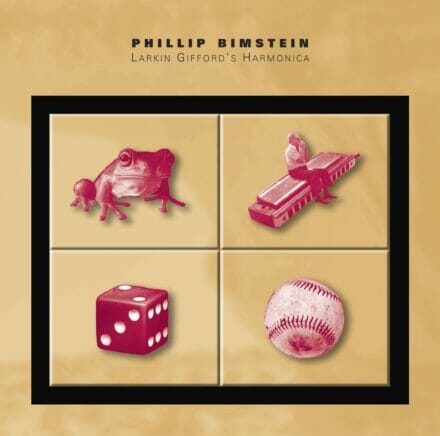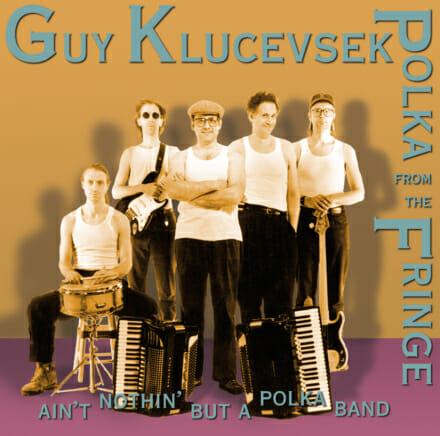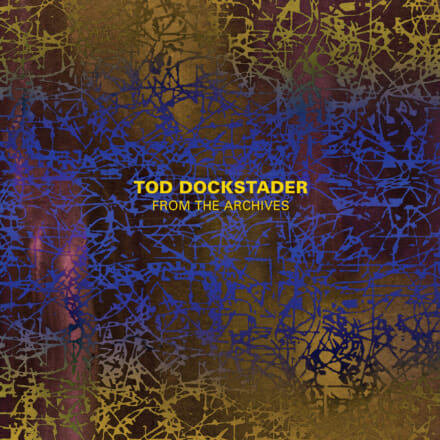From A to Z offers ten enticing selections of compelling, engaging electroacoustic music. It’s a specially priced compilation that’s an excellent introduction to the Starkland label. The diverse music ranges from Tod Dockstader’s powerful musique concrète to the digitally sampled bovine vocalizing in Phillip Bimstein’s udderly charming portrait of a Utah farmer.
The CD opens with three excerpts from Starkland’s two Dockstader “organized sound” CDs, widely praised in over 25 highly positive reviews. Dockstader writes:
“These excerpts are from works made in the ‘classical’ period of electronic music, Before Keyboards. My synthesizer was a test-tone oscillator, played by twisting a dial, like a radio. Then, it was all a bit haywired and cumbersome, and involved hard physical work, like painting. At the same time, like painting, it was invigorating – working in the colors of sound. The sounds I had often suggested the structures I built, so all three of these excerpts are unalike: the first part of Luna Park is a trio for an oscillator and two people laughing; the third part of Apocalypse is a planned chaos for a toy cat-cry, voices, an oilwell, percussion, and piano; the Tango from Quatermass is a dance for two oscillators and a balloon, with rhythms of tape-echo generated by the instrument central to all my work: the tape recorder, itself. The recorder was always an active player, not, as it was designed to be, a passive one. All the works were laid onto two-track tape in one pass, ‘live’ (the invigorating part), and then edited and edited and edited – the surgical part, with a razor blade, the other essential tool in my work.”
Read more about Dockstader’s Quatermass CD.
Read more about Dockstader’s Apocalypse CD.
Paul Dresher offers these comments about his piece on this CD:
“Underground was composed in Spring 1982, and was the first part of a trilogy of works commissioned by choreographer Wendy Rogers for her work Winter Green. The piece was created and performed on a multi-track tape loop system designed for live performance and built by electronic technician Paul Tydelski and myself. This system consists of a four-channel tape machine with three playback heads located at various points in the path of a single closed loop. Record/play functions and the mixing and routing of all sounds are controlled by the performer with an array of foot pedals and switches, thus leaving the performer’s hands free to play an instrument without interruption. Built in 1979, the system allows a single performer to develop complex harmonic, polyphonic or polyrhythmic material without using pre-recorded tapes. The only sound source in Underground was a very early four octave Casio electronic keyboard. A single 15-band graphic equalizer was extensively used for altering and transforming the sounds both directly from the keyboard and those keyboard sounds coming from the tape loop system. I recorded the work in a single ‘live’ take directly to tape.”
Read more about Dresher’s Casa Vecchia CD.
Paul Dresher’s music also appears on Starkland’s Immersion surround sound DVD.
Joseph Kasinskas writes:
“The Rider is a work for marimba, gongs and digital echo. It is a piece of a larger work, Demeter’s Lament, premiered by Relâche in 1991, in which musicians become characters who walk through rituals while their music is altered electronically. Hades, the Greek god of Death, is a percussionist who reveals his regal nature in the piece. The Rider is designed to be played in an unchanging electroacoustic environment of a steady, ceaseless electronic echo. The work gains its character from the player’s ability to ‘ride’ the time of the echo and to musically control that time. Hades is able to match his live performance speed with the echo in proportions of time and prolation which produces many of the aural effects contained in The Rider.”
Joseph Lukasik comments:
“Utamaro’s Dreams was commissioned by gifted Japanese-Swiss choreographer Heidi S. Durning. The original concept for the dance was inspired by the works of Kitagawa Utamaro, an 18th century Japanese Ukiyo-e woodblock printer renowned for his depiction of women set in scenes from daily life. The dance opens with six characters from Utamaro’s prints meditating as Buddhist nuns. They meditate to renounce their past lives, but each in turn remembers what they were before, reliving the joys and sorrows of their lives through dance. The excerpt on this CD presents the first ten minutes from the overall eighteen minutes of music. The scenes presented here are: The Monastery, The Courtesan, The Fool, and The Woman With The Mirror.”
Pamela Z writes:
“In Tymes of Olde, recorded on analog 8 track, combines ‘rhythm’ tracks (produced by digitally sampling my voice and either looping the samples and dropping them to a track, or playing the samples via keyboard live to tape) and ‘melodic’ tracks recorded live to tape. The source of all sounds in this piece is my voice.”
Read more about Pamela Z’s A Delay is Better CD.
Pamela Z’s music also appears on Starkland’s Immersion surround sound DVD.
Co-composer Barbara Imhoff comments:
“Obsession, Addiction and the Aristotelian Curve began with a work I’d written for acoustic and processed harp. The piece structurally represents the destructive, insular cycle of addiction. The classic ABA form presents a gradual take-over by the 4 chord cycle of the processed, distorted harp track, which becomes a character emerging out the addict’s nightmare state…. Pamela transferred my original stereo mix to her 8-track, filling the remaining tracks with both straight and processed vocals. The two of us decided the experimental mixdown to DAT was a finished piece.”
Charles Amirkhanian writes:
“The title, Vers Les Anges, comprises several references to the dedicatee, Nicholas Slonimsky, for whom the music was composed in celebration of his 96th birthday. A resident of Los Angeles, (Les Anges, in French), Slonimsky translated Schloezer’s life of Alexander Scriabin, composer of the piano work ‘Vers la Flamme.’ For this piece, I assembled a number of musical references appropriate to Slonimsky’s life. As a conductor, the Russian prodigy directed the first performance of Edgar Varèse’s Ionisation (1931), which features the sounds of sirens and a battery of percussion instruments, also heard at the beginning of Vers Les Anges. Other raw sonic materials include the sound of a German music box (from the period of Slonimsky’s youth), a digitally sampled komungo (played by Korean virtuoso Jin Hi Kim), and cuckoo clock and cat sounds which recall Slonimsky’s home. Most processing in the work used a Synclavier at Henry Kaiser’s Oakland, CA studio, and the final mix was made with engineer Michael Yoshida at the 24-track Cross-Current Audio Facility at KPFA. The piece was commissioned by the syndicated public radio talk show ‘Heat,’ and was premiered on a coast-to-coast broadcast on April 26, 1990.”
Phillip Bimstein comments:
“I awoke one morning to the sounds of cows mooing in the pasture next to my home. Music to my ears, the moos became the inspiration for a concerto in three ‘moo-vements,’ Garland Hirschi’s Cows, which premiered at the Salt Lake Alternative Music Festival in October 1990. The piece, which uses an Akai sampler to make music of the moos, also includes the voice of the cows’ owner, Garland C. Hirschi of Rockville, Utah, as he tells the story of growing up with cows and what makes them moo. The work was featured at the 1991 Telluride Composer-to-Composer Festival, and it received an Honorary Mention in Austria’s Prix Ars Electronica ’92.”
Read more about Bimstein’s Garland Hirschi’s Cows CD.
Read more about Bimstein’s Larkin Gifford’s Harmonica CD.







